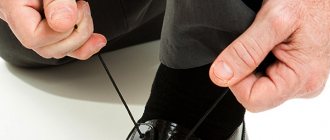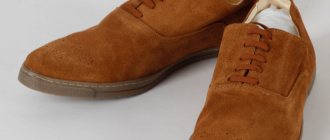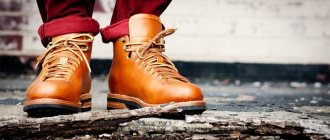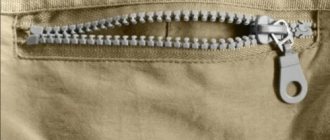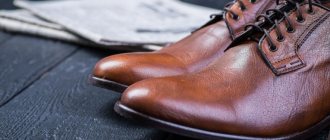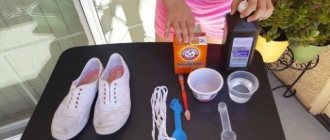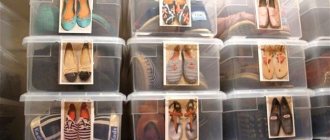Winter time has come and snow has fallen. Thanks to the thaw and cold, ice has formed on the footpaths. To avoid falling, people have come up with many options to keep their shoes from slipping. More details below.
In winter, snow and ice can both make people happy and, on the contrary, cause injury. Most teenagers rarely think about this - they love to walk in the fresh air, visit skating rinks, play snowballs, etc. But for older people, winter is associated with the danger of falls, injuries due to slippery paths and poor winter shoes. Even the most beautiful boots may not withstand the real test of well-packed snow. That is why craftsmen are trying various methods to make shoes non-slippery.
How to make it with glue and sand so that boots do not slip: tips, life hacks
If you are unlucky with your boots and your soles slip even on a snowy road, then with the help of improvised means you can correct this shortcoming. To do this, prepare glue - preferably “Moment” , regular sand , degreasing liquid . And do the following:
- Degrease the sole with acetone or alcohol.
- Apply a moment to its surface, wait until it dries slightly.
- After this, pour sand directly onto the areas covered with glue, wait until the entire application hardens.
- This is enough for about a month of wearing in cold weather. After thirty days you can repeat the process.
Non-slippery soles with your own hands
If you are not afraid of ruining your boots, then melt sand into their soles. It will be enough just to heat it for five to ten minutes in a frying pan or baking sheet. And then place the shoes with the soles on the hot sand. Due to the high temperature, sand grains will remain on the surface of the sole.
IMPORTANT : Make sure that the base of the boots does not melt more than necessary when heated, especially if it is not high.
What to do if your sneakers slip in the gym
With an active lifestyle, it is important to monitor your health and, first of all, do no harm. Properly selected shoes will help you keep fit easily and not harm your body. During strength exercises, most of the load goes to the joints and legs. Therefore, you need to choose comfortable, high-quality sneakers, specially designed for sports.
However, often when playing sports, the gym floor can be slippery, which can lead to injury. Also, some sneakers have slippery soles that prevent you from firmly fixing your foot on the floor or ground. How to fix this problem will be discussed below?
How to use sandpaper to prevent shoes from slipping in winter: tips, life hacks
There are many more recommendations on this matter, and not everyone may be right for you. Each method has its positive and negative sides. A simple option is an anti-slip platform treated with sandpaper . Just rub the product and feel free to go outside. But roughness is not always effective in cases of falls. The process should be repeated each time before leaving. Therefore, the method is not used often.
Sandpaper against ice
How to use screws to prevent boots from slipping in winter: tips, life hacks
Nowadays it’s not a problem to buy ready-made ice shoes, but if a man has golden hands, then making an anti-slip surface on his shoes himself is not a problem. You just need to buy screws and screw them into the sole one by one.
True, with such shoes it will not be entirely comfortable to walk indoors, in the subway, or in the supermarket. It will make a knock and may scratch the floor, but you won’t fall on the street.
Screws to prevent shoes from slipping
Tread
In addition to the high-quality rubber composition, manufacturers pay great attention to the tread. Let's figure out what types there are, what their advantages and disadvantages are.
- Ice Grip (manufactured in Germany). In the manufacture of this model, a soft rubber compound is used. At the vulcanization stage, small ceramic particles are added to it. They create an abrasive that clings well to ice. Soft rubber is used only in the form of small lugs. The more there are, the less the shoes slide on the ice. This tread is well suited for ice that has formed on a hard crust of trampled snow.
- Acrtic Grip (manufacturer Italy). The manufacturing technology is identical to the previous one. But the degree of safety is higher - it holds even on the slipperiest wet ice.
- Tread with spikes. Metal elements are built into the sole directly during shoe production. This model is considered the most ideal for icy conditions. Sharp studs provide traction on the most slippery surfaces. For example, there are sneakers for runners with spikes - they can be used for running on paths covered with solid ice.
How to use a patch or double-sided tape to prevent shoes from slipping in winter?
When you have nothing at hand, but there is a pharmacy nearby, a regular band-aid will temporarily save you from falls. The only drawback is that it quickly peels off from the surface of the sole. All efforts become useless during long walks. The patch is enough for no more than a few hours of walking.
The patch will save you from slippery roads
How to use an old nylon stocking to prevent shoes from slipping in winter?
The next device is that it adheres well to the tread surface even in slush. We are talking about nylon tights. To make them stick to the wedge, set the tights on fire, they will start to melt and drip. Direct these drops onto the sole. And do a few drops per place to make tubercles.
How not to fall if it's slippery?
Coca Cola
No matter how strange the use of Coca-Cola may seem at first, this drink is the most common among athletes and an effective solution to get rid of the problem:
- Before training, the soles are doused with Coca-Cola.
- The sneakers must dry.
It is permissible to confidently head to the gym; slipping in the products will be kept to a minimum. The effectiveness of the work done will be short-term; the actions will need to be repeated regularly before training.
How to use linen or flannel fabric to prevent shoes from slipping in winter?
Various types of fabrics also prevent shoes from slipping. Flannel, linen, felt and others are suitable for such purposes. You can make a non-slip sole in just a few hours. It all depends on how long it takes for the glue to harden.
You will need to do the following:
- Cut out four felt pieces.
- Glue the platform to the toe and heel with shoe glue.
- When the glue dries, you can even walk on ice in these boots and not be afraid of bruises.
Flannel, felt against slipping of winter shoes
IMPORTANT : If you glue the fabric in small pieces on the surface of the wedge, your boots will have a stronger grip on slippery roads.
Method four. Glue pieces of natural fabric to the sole
I chose jeans. I cut out neat appliqués and glued them to the sole of the sneakers using “Moment”. It turned out stylish. At least some kind of joy.
|
Because, once on the ice, I immediately realized that these same people, it seemed, had not tested the “folk” method. The foot slips even when walking. Attempts to accelerate failed one after another. When I managed to speed up and get over the start line, I went 3.5 meters ahead without any signs of resistance.
It's a shame.
|
How to use a soldering iron to prevent shoes from slipping in winter?
If you have high-soled shoes, but they slip, you can correct this problem with a regular soldering iron. Heat up the power tool and draw a design on the surface. The deeper the furrows of this art are, the less danger there will be of falling on the icy pavement surface.
How to use a soldering iron against slippery shoes?
IMPORTANT : Make the furrows carefully so that the soles of the boots continue to reliably protect your feet from the cold.
Method two. Melt on nylon sole
In my world, tights are used for two things - to wear and to store onions in them (although I still don’t know why, but grandma does it). Therefore, I approached the melting of tights with enthusiasm. Naive woman.
Nylon doesn't exactly melt. He burns. And very quickly. And here I am standing in the middle of my corridor, tights on fire in my hands, my hand is burning, drops of melted nylon begin to fall not only on the soles of my shoes, but also on the floor. Moreover, even after falling, they continue to burn, and the eyes are corroded by acrid smoke. In general, I went outside to “improve” the second shoe.
Attention. The spectacle is not for the faint of heart.
|
On the ice, my foot slipped when walking, and I was sad even before I got to the start line. Because for some reason I had the highest hopes for this method.
However, after overclocking, I still didn’t get to the ultra-nano-coated boots from the workshop. At least something good, I thought and went to change my shoes.
But disappointment overtook me in the office. For some reason I decided to wear everything that had been modernized to work. So here it is. Nylon glides on concrete, tiles, linoleum and plastic. That is, if I became more stable on the ice, I lost it in a previously safe environment. So-so method.
How to use rubber pads to prevent shoes from slipping in winter?
If you don’t want to improve your shoes yourself, you can take advantage of manufacturers’ suggestions. Moreover, now there are many of them. You can even buy anti-icing pads for any boots, boots and shoes with heels at the supermarket. Having put on such a pad, you will no longer be afraid to walk on the slipperiest roads.
Rubber pads for winter shoes
IMPORTANT : Even with any pads, if you do not follow the rules of walking in slippery areas, you can still fall. Therefore, do not take long, too confident steps in icy conditions. Move slowly, choose the least slippery areas for walking, watch your step, and do not make sudden movements.
Design Features
The entire structure of the shoe is divided into upper and lower parts. The upper part consists of the following elements:
- Sock – covers the toes, withstands the greatest mechanical loads when worn.
- Vamp – covers the back of the foot and connects the toe, tongue and boots.
- Boots - cover the ankle joint, they are sewn to the vamp.
- Eyelet - the upper part of a shoe designed for lacing holes or hooks.
- Heel counter – protects the heel and foot, secures the heel, is made of hard leather.
- Tongue – covers the top of the foot, sewn to the vamp.
- Insole – connects the upper and lower parts.
The bottom part of the product contains:
- Sole – sewn along the contour with the upper part, divided into outsoles, shank, welt and filler.
- Heel – raises the heel and is attached to the sole; the top layer can be rubber.
- Heel protects the heel from rubbing.
- Welt is a connecting element between parts.
- Protective inserts – prevent abrasion of the bottom layer of the heel.
- Filler – fills the space under the insole, increases comfort during use.
- An instep support is a wooden or metal part attached between the sole and the insole.
Knowing the design of shoes allows you to make each detail better, in accordance with its purpose.
How to use a special ice pad to prevent shoes from slipping in winter?
Owners of beautiful dress shoes sometimes have a hard time in icy conditions. After all, such boots, boots, as a rule, are not made with thick soles. Therefore, in order not to fall, it does not hurt to buy special devices - ice access. They are almost invisible on ankle boots, but you will feel confident.
Ice access for shoes
Women who cannot imagine how to walk without heels can also find ice shoes for themselves - they are universal. However, their beautiful gait will not change.
Attachments for women's boots with heels
Recommendations for choosing winter sneakers
You can buy inexpensive winter sneakers for men or women in shoe stores or on online sites recommended by numerous buyers. Winter sneakers, unlike the demi-season or summer versions, must have a non-slip platform. It is made of polypropylene or high-quality thermoplastic rubber.
It is better if the toe of the lower base is wider than the heel. The deep relief allows the shoes to maximally protect a person from injuries due to falls. It should be directed in opposite directions. The sole, regardless of thickness, has the property of flexibility.
How can you use a shoe workshop to prevent your shoes from slipping in winter?
The above methods may not suit everyone. Some are not entirely sure that they are effective, others do not want to do this; in their opinion, it is better to go to a workshop. There, specialists will paste a rubber sticker with a good protector, which can protect you from any falls.
And for a higher cost you can stick on an even better “protector”. Not only will the shoes noticeably become non-slip, but the appearance of such boots will also be attractive.
Non-slip soles on winter boots
To avoid such problems with the sole in winter, it is best to pay attention to the material used for its manufacture. A corrugated, soft wedge or polyurethane platform is ideal for this season. And, of course, the quality of the shoes plays an important role.
Primary requirements
The two main factors that determine the degree of slip are the material of the sole and the depth of the tread on it . The country of origin is important - it is advisable to choose one that experiences cold weather. Non-slip shoes provide good traction on the road, even when the road is icy or covered with snow. In winter, this possibility exists if there are soft tires.
Popular materials for making soles of winter and demi-season shoes and their properties:
- Thermoplastic elastomer. One of the most stable types, combining the qualities of thermoplastics and vulcanized rubber. It has strength, flexibility, frost resistance, and wear resistance. It retains its properties at temperatures down to -45 °C. Advantages: lightness, long service life, low cost.
- Thermopolyurethane. This is a polymer material. The sole made from it looks modern and has a number of advantages: wear resistance due to its high density, resistance to bending and abrasion, frost resistance at temperatures down to -50 ° C. It has good grip on the road surface, which virtually eliminates slipping. A disadvantage is the low degree of bendability.
An important rule for choosing non-slip shoes is to carefully study the tread. The main requirement for it is sufficient relief depth. A pattern with different directions is welcome, since only transverse or diagonal stripes will not provide complete slip protection. It is good if the teeth of the sole are arranged crosswise. A combination is possible when one part is made in the form of round protrusions, and the second consists of strips.
The size of the teeth depends on who the boots are intended for. A more elegant and discreet option is suitable for women, while powerful protectors with large elements are suitable for men.
Thermoplastic elastomer
Thermopolyurethane
Deep outsole tread
Drawing with different directions
The teeth of the sole are arranged crosswise

